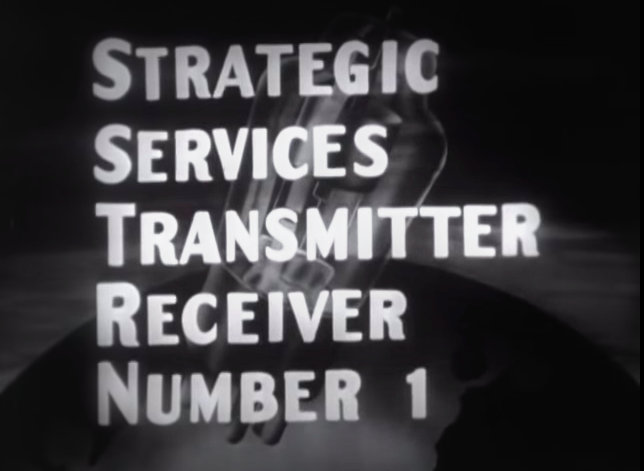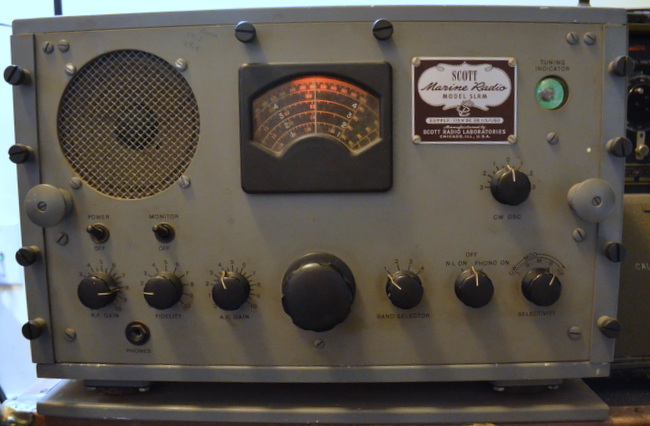Many thanks to Jonathan Marks, who shares this short video about the history of the Skelton HF Transmitting Station:
Tag Archives: WWII
WWII Spy Radio: the SSTR-1
Many thanks to the CIDX Messenger for sharing this video:
https://www.youtube.com/watch?v=L2qENm9XNCk
Rhode Island’s WWII farmhouse monitoring station
 Many thanks to SWLing Post reader, Mike (AC4NS), who shares a link to this fascinating article by Tom Mooney? in the TheProvidence Journal. Here’s an excerpt:
Many thanks to SWLing Post reader, Mike (AC4NS), who shares a link to this fascinating article by Tom Mooney? in the TheProvidence Journal. Here’s an excerpt:
“There was nothing remarkable to see on Chopmist Hill in 1940 when, a year before the Japanese would attack Pearl Harbor and bring America into the war, a Boston radio technician by the name of Thomas B. Cave drove up Darby Road.
[…]Cave worked for the Intelligence Division of the Federal Communications Commission, charged with finding a hilltop in southern New England that could serve as one of several listening posts to detect radio transmissions from German spies in the United States.
What he discovered up at William Suddard’s 183-acre farm was nothing short of miraculous.
Because of some geographic and atmospheric anomalies, Cave reported he could clearly intercept radio transmissions coming from Europe — even South America.
As a Providence Journal story revealed after the war, military officials were initially skeptical. They wanted Cave to prove his remarkable claims that from Chopmist Hill he could pinpoint the location of any radio transmission in the country within 15 minutes.
The Army set up a test. Without telling the FCC, it began broadcasting a signal from the Pentagon. From atop the 730-foot hill in the rural corner of Scituate, it took Cave all of seven minutes to zero in on the signal’s origin.
In March 1941, the Suddards obligingly moved out of their 14-room farmhouse, leasing the property to the FCC.
Workers set off erecting scores of telephone poles across the properly, purposely sinking them deep to keep them below the tree line. They strung 85,000 feet of antenna wire — the equivalent of 16 miles — around the poles and wired it into the house.[…]”
Click here to read the full article in the The Providence Journal.
If you find this fascinating, you might also read this article about the Radio Secret Service in England.
BBC At War: new series sheds light on WWII broadcasting
Many thanks to several SWLing Post readers from the UK who have pointed out this new BBC Two documentary: The BBC at War, Presented by Jonathan Dimbleby.
BBC Two describes the documentary as, “[a]n enthralling series exploring how the BBC fought not only Hitler but also the British government to become the institution it is today.”
Of course, the BBC iPlayer is region-locked, so you either need to be resident in the UK or using a proxy server in order to view. The first episode is available to view now; the second will be soon.
Honoring Memorial Day: The White Cliffs of Dover
Today is Memorial Day, and I’m feeling humbly grateful to all of those who paid the ultimate sacrifice for their country. Since I’ve been reading a lot of WWII history lately, I’ve also been playing a lot of WWII-era music here in my sanctuary to all things radio.
Few songs sum up the yearning sentiment of World War II better than Vera Lynn’s 1942 rendition of “The White Cliffs of Dover.” It’s an iconic song, one that helped British soldiers see beyond the war while mourning its painful toll. It was written in 1941 when England was taking heavy casualties, just before American allies joined the effort.
This morning, seeking something with a little authenticity, I played “The White Cliffs of Dover” though my SStran AM transmitter, and listened to it through “Scottie,” my WWII-era Scott Marine radio (above). I made this recording by placing my Zoom H2N recorder directly in front of the Scott’s built-in monitor speaker.
So here you go: a little radio tribute to all of those who fell–on both sides–of that infamous second world war.
And thanks to all who serve and have served in the name of “peace ever after.”
Click here to download the recording as an MP3, or simply listen below:
Video: The Battle of the Beams
Many thanks to SWLing Post reader, Jonathan Marks, who shares this video about Luftwaffe Navigation Beams via YouTube–fascinating WWII history:
Video description:
This episode documented how British Intelligence became aware of various German Luftwaffe Navigation Beams, such as Knickebein, X Gerat and Y Gerat, and the counter measures developed to combat them, in what became known as the Battle of the Beams.
It is largely based on the book Most Secret War written by R.V.Jones who features heavily in the series. This programme contains rare footage of The Blitz including the bombing of Coventry. Interviewees include Albert Speer and AVM Edward Addison.
Wartime radio: The secret listeners
After publishing the post about Geoff Hanley and the Radio Security Service last week, I discovered this brilliant 1979 documentary from the BBC which highlights civilian involvement in radio-based intelligence during WWI and WWII.
Here’s a description from the East Anglian Film Archive:
“It was the tireless work of amateur radio enthusiasts during World War I, that initially convinced the Admiralty to establish a radio intercept station at Hunstanton. Playing an integral role during the war, technological advances meant that radio operators could pinpoint signals, thus uncovering the movement of German boats, leading to the decisive Battle of Jutland in 1916.
Wireless espionage was to play an even more important role during World War II, with the Secret Intelligence Service setting up the Radio Security Service, which was staffed by Voluntary Interceptors, a band of amateur radio enthusiasts scattered across Britain. The information they collected was interpreted by some of the brightest minds in the country, who also had a large hand in deceiving German forces by feeding false intelligence.”





